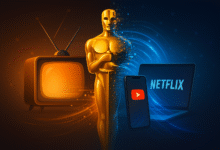Why Modern Folklore Is Making a Huge Comeback in 2025

In recent years, a surprising cultural shift has been taking place. From social media platforms to blockbuster films and bestselling novels, modern folklore is experiencing an unprecedented resurgence. In 2025, this trend has not only sustained but significantly grown, becoming a powerful form of storytelling, identity expression, and community bonding. But what exactly is fueling this revival? And why now?
EXPLORE THE CONTENTS
Rediscovering Identity in a Globalized World
As globalization continues to dissolve national borders and blend cultures, individuals are seeking ways to reconnect with their roots. Modern folklore, with its deep ties to local history, myth, and tradition, offers a compelling way to reclaim a sense of identity. Whether it’s urban legends from New York or ancient ghost stories from Japan, these tales resonate because they speak to shared cultural memories.
Young people, especially, are embracing these stories as a form of resistance against homogenization. TikTok creators, Instagram storytellers, and YouTube documentarians are all exploring the folkloric traditions of their heritage, reinterpreting them for the digital age. In doing so, they’re building bridges between past and present, old and new.
Digital Platforms Amplifying Traditional Stories
One of the most significant drivers of this resurgence is the role of digital platforms. Social media, blogs, and streaming services have become breeding grounds for modern adaptations of folklore. Hashtags like #FolkloreTok and #UrbanLegends are attracting millions of views, allowing users to share local myths, supernatural experiences, and ancient customs with a global audience.
Podcasts dedicated to folklore storytelling, such as “Lore” and “The History of England,” are captivating audiences who crave in-depth explorations of myths and legends. YouTube channels are animating ancient tales, giving them new life through visually engaging formats. In 2025, these digital venues are no longer niche; they are mainstream conduits for cultural heritage.
The Rise of Folklore-Inspired Entertainment
Entertainment industries are increasingly turning to folklore narratives to inspire content that feels both familiar and fresh. From Netflix series based on Slavic mythology to Marvel’s ventures into African and Norse legends, folklore is no longer relegated to the classroom or dusty libraries. It’s becoming prime-time entertainment.
Films like “The Witcher,” “Moana,” and “Encanto” show that audiences are hungry for stories rooted in myth and tradition. These films don’t just entertain; they educate viewers about different cultures and their unique mythological frameworks. In 2025, streaming services are doubling down on this trend, greenlighting more projects that explore indigenous and historical stories.
Escapism and the Supernatural in Uncertain Times
In a world still reeling from pandemics, political instability, and climate anxiety, people are turning to supernatural folklore as a form of escapism. Tales of otherworldly beings, enchanted forests, and prophetic visions offer solace and intrigue when real life feels overwhelming.
Modern folklore often blurs the line between reality and fiction, providing a safe space to explore fears, hopes, and existential questions. These stories give us metaphors to make sense of our world. In 2025, the demand for this form of storytelling reflects a collective yearning for meaning amid chaos.
Folklore and the Rise of Niche Communities
The internet has enabled the formation of niche communities around shared interests, and modern folklore is a perfect catalyst for such groups. Online forums, Discord servers, and Reddit threads allow users to dive deep into specific myths, compare regional variations, and even co-create new legends.
Communities like #CryptidCore or #FairyFaith enthusiasts are not just retelling old stories; they are actively expanding the folkloric canon. Fan fiction, original art, and speculative theory are all part of a collaborative process that gives folklore a living, breathing presence in contemporary culture.
The Role of Education and Academia
Educational institutions are also playing a role in the revival of modern folklore. Universities are offering courses on comparative mythology, folk traditions, and cultural storytelling. Researchers are digitizing ancient manuscripts and making them accessible to the public, bridging the gap between academia and pop culture.
In 2025, the academic world recognizes the value of folklore as a lens through which we understand history, psychology, and societal development. This legitimization has encouraged more people to explore folklore seriously, not just as stories but as vital cultural documents.
Commercialization Without Dilution
Interestingly, the commercial world has tapped into this revival without necessarily diluting the core essence of folklore. Brands are collaborating with folklore experts to craft authentic narratives in marketing. Fashion lines inspired by Celtic and Nordic myths, perfume collections based on ancient rituals, and even food packaging with traditional stories are all part of a broader trend.
This approach reflects a growing consumer preference for products with stories, heritage, and meaning. Rather than exploit folklore, many brands are now stewards of cultural storytelling, introducing younger audiences to traditions they might otherwise overlook.
The Intersection of Folklore and Technology
With advancements in augmented reality (AR) and virtual reality (VR), folklore is not just being read or watched—it’s being experienced. Imagine walking through a VR recreation of an ancient Viking village, complete with mythological beings and interactive legends. In 2025, tech developers are creating immersive experiences that allow users to engage with folklore in groundbreaking ways.
AI is also being used to reconstruct lost tales, translate ancient texts, and generate interactive storytelling based on user input. This blend of tradition and innovation is making folklore more accessible and engaging than ever before.
Political and Social Commentary Through Folklore
Folklore has always been a vehicle for coded political and social messages. In 2025, storytellers are using folkloric metaphors to comment on contemporary issues such as climate change, inequality, and displacement. Myths are being reinterpreted to reflect modern dilemmas, giving them renewed urgency and relevance.
For example, environmental activists are using indigenous tales of nature spirits and sacred landscapes to highlight the importance of conservation. Feminist reinterpretations of classic myths are also gaining traction, challenging patriarchal narratives and spotlighting powerful female figures.
A New Generation of Storytellers
Perhaps the most exciting aspect of the folklore revival is the emergence of new voices. Marginalized communities are reclaiming their narratives, sharing stories that were once suppressed or ignored. The democratization of media means anyone with a smartphone can contribute to the global tapestry of folklore.
These new storytellers bring fresh perspectives and authenticity, enriching the modern folklore landscape. Whether through zines, video essays, or live performances, they are ensuring that folklore continues to evolve while honoring its roots.
Conclusion: The Living Future of Ancient Tales
In a fast-paced digital world, the return to modern folklore may seem paradoxical. But it’s precisely this contrast that makes folklore so appealing in 2025. These stories offer continuity in an era of rapid change. They connect us to something timeless, reminding us that no matter how advanced our technology becomes, our need for storytelling, identity, and meaning remains constant.
The resurgence of modern folklore is more than a trend; it’s a cultural movement. It is reshaping how we understand the past, navigate the present, and envision the future. As we move further into this decade, expect folklore to remain not just relevant but vital to our shared human experience.







